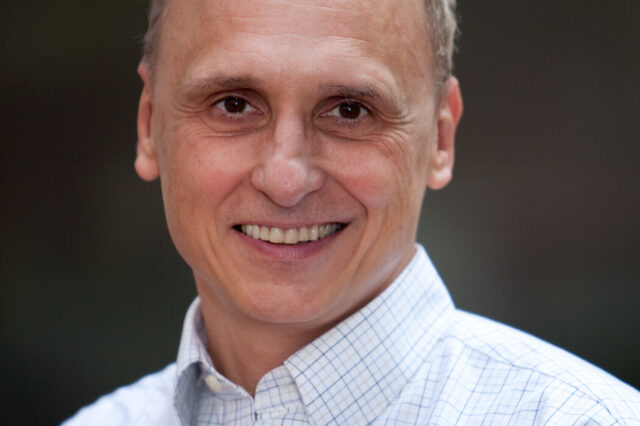Gene therapy helps muscular dystrophy patients breathe easier

Children with a rare form of muscular dystrophy called Pompe disease often spend their days tethered to mechanical ventilators in order to breathe. But results from a new clinical trial at University of Florida Health show that gene therapy improved respiratory function in these patients and increased the time they could spend breathing on their own without assisted ventilation.
“This approach to treating an inherited disease that affects respiratory function has been safe and we are pleased to see it was also effective at reversing some of the respiratory deficits these patients had,” said Barry Byrne, M.D., Ph.D., director of the Powell Gene Therapy Center at UF and a professor of pediatrics in the UF College of Medicine.
Pompe disease is a neuromuscular condition that occurs when children are born with mutations in a gene responsible for the production of an enzyme called lysosomal acid alpha-glucosidase, or GAA. The enzyme is necessary to convert stored sugar in the body to glucose. Without it, the stored sugar, or glycogen, builds up in muscle. This accumulation leads to muscle weakness and damage that affects patients’ ability to walk and breathe, and can ultimately harm the heart.
Patients with Pompe disease typically take enzyme replacement therapy, which helps stave off some of the effects of the disease and prolongs survival. But it isn’t a cure, Byrne says, and for patients who already require ventilation, the therapy does not help them breathe without assistance.
“Being freed from the ventilator is an important milestone,” Byrne said. “It allows them to maximize development as they grow and do things they could not do if they were hooked to the ventilator. There is also a safety factor. If they have total dependence on equipment and they lose access to power, they will die.”
Published in the journal Human Gene Therapy, the phase I/II clinical trial followed five patients with Pompe disease whose condition had progressed to the point they required mechanical ventilation to breathe. Researchers injected patients with a corrective form of the gene using the vector adeno-associated virus type 1, or AAV-1, a harmless virus that shuttles the gene directly into cells.
After following the patients for six months, the researchers determined that not only was the therapy safe, it also improved respiratory function in study participants. An additional abstract, which recently earned co-author Barbara Smith, P.T., Ph.D., an Excellence in Research Award from the American Society of Gene & Cell Therapy, showed that all of the patients the researchers followed for the first year of the study continued to improve. Improvements varied from patient to patient depending on how long participants had been using a ventilator. After gene therapy, some patients were able to breathe on their own for additional minutes while others were able to make it an hour or more without using a ventilator.
“The ultimate hope is if we can intervene earlier in their disease process, we will be able to maintain or improve their function even more,” said Smith, an assistant professor of physical therapy in the UF College of Public Health and Health Professions. “That’s our goal.”
As a next step, Byrne hopes to soon begin testing a more efficient vector to transport the corrective gene into cells. This new vector, AAV-9, should allow the gene to more easily penetrate the central nervous system. To better treat and potentially cure the disease, therapies must treat the disease in spinal and nerve cells as well as in muscles, Byrne said. If this works, it could spell hope not only for curing Pompe disease, but also for treating other congenital diseases that cause muscle weakness.
“For genetic diseases there are no curative treatments right now. We have reached a point where we believe that a single-dose long-term therapy that is as effective as the natural gene could be considered a curative treatment,” Byrne said. “There are very few things in medicine that have been able to make that claim. There are lots of treatments that have short- or long-term side effects that limit the utility of the approach. If this approach has the degree of effect we expect, then we would probably consider that a true cure.”